10 Interesting Facts About Brachiosaurus for Kids
Brachiosaurus was a dinosaur that lived between 155.7 million and 150.8 million years ago, during the mid to late Jurassic Period. It had a giraffe-like neck and forelegs that were longer than its rear legs. In reality, the word Brachiosaurus means “arm lizard.” The majority of the specimens have been discovered in North America’s fossil-rich Morrison Formation, yet the dinosaur in question was unlike any of the others that had inhabited the area. Its forelegs were longer than its rear legs, and its long neck gave it the appearance of a giraffe.
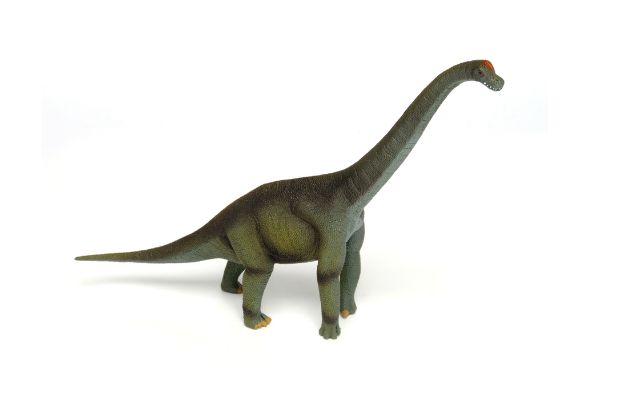
In this post, we will be sharing some interesting facts for kids about the Brachiosaurus, so keep on reading!
Here are some of the interesting facts about the Brachiosaurus for kids to learn about:
1. Brachiosaurus was a plant feeder that ate flora far above the ground.
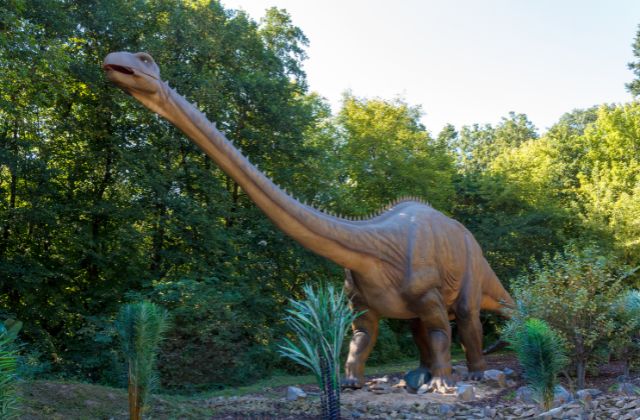
The Brachiosaurus was a herbivore, meaning it only ate plants. Its huge size made it a good candidate for feeding on coniferous trees and would also have grazed on big bushes. They would have had to ingest massive amounts of food because of his size. It would have required to devour 400 kg (880 pounds) of plant material per day just to exist!
Chewing, like humans, required a basic up and down jaw motion. They did not have spoon-shaped teeth like previous sauropods but rather conical teeth that helped them eat. In addition, unlike sauropods, they were unable to rear on their hind legs to reach higher vegetation since their body form and balance were incompatible with the activity.
2. It was suggested that the Brachiosaurus was semi-aquatic.
Naturalists theorized a century ago that Brachiosaurus could only have sustained its 50-ton weight by strolling along the bottoms of lakes and rivers and forcing its head out of the surface to feed and breathe, much like a snorkel. However, this notion was debunked decades later when a careful mechanical investigation revealed that the tremendous water pressure of an undersea home would have soon smothered this massive beast. Still, some individuals continue to believe that the Loch Ness Monster is a 150-million-year-old Brachiosaurus or another form of a sauropod. Only one dinosaur, Spinosaurus, has been demonstrated to be capable of swimming.
3. Brachiosaurus could grow to be over 75 feet (23 meters) long and weigh up to 80 tonnes.
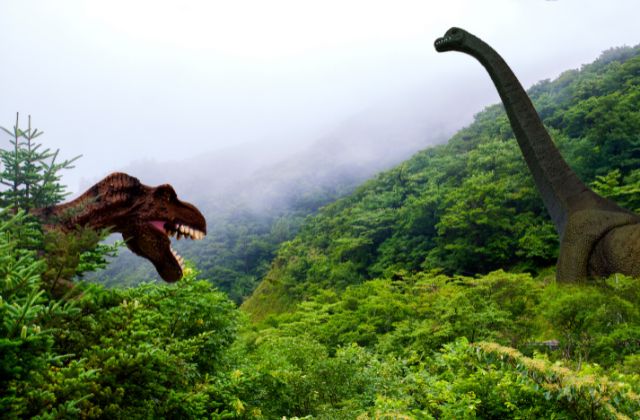
It was around 40 feet (12 meters) tall from its head to the ground. They might grow to be up to 85 feet long and weigh over 60 tonnes. Their jaw bones were robust, and they possessed 52 spoon-shaped teeth. Brachiosaurus was distinguished by its sloping back and lengthy neck. It had a tiny dome-shaped head and a relatively flat nose. It had longer front legs than hind legs. It had a relatively short tail as well.
4. Brachiosaurus was a quadrupedal dinosaur.
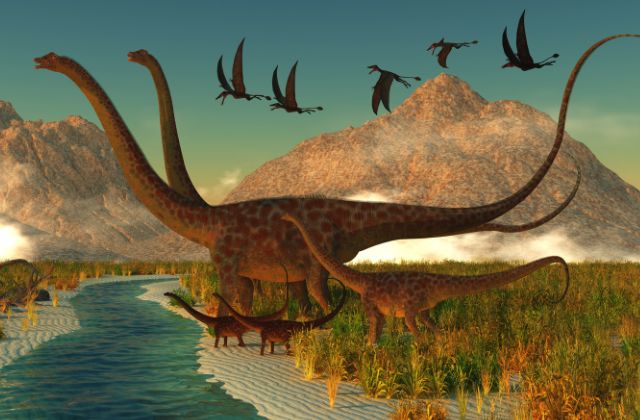
Brachiosaurus was a quadruped, with a tiny skull, a long neck, a massive trunk with a high-ellipsoid cross-section, a long, muscular tail, and thin, columnar limbs, like all sauropod dinosaurs. These giraffe-like dinosaurs belonged to the Sauropod family and were known for their enormous size. They walked on all fours. Their front legs were far longer than their back legs making it easier for them to walk due to their huge size.
5. Brachiosaurus couldn’t swim.
Since it was so hefty, it walked on the lake and river bottoms instead. It frequently entered bodies of water to cool down in the hot temperatures of semiarid zones. Its nostrils were located high on the head, leading experts to assume that it might have lived in or swam in the water.
7. Most size estimates for Brachiosaurus derive from remains of what was assumed to be its African version, B. brancai; thus, it’s uncertain how giant the dinosaur indeed was.
Paleontologist Michael Taylor reanalyzed the remains of B. brancai and B. altithorax (the North American species), concluding that B. brancai should be classified in its own genus, Giraffatitan brancai. Taylor later calculated that B. altithorax was around 82 feet (25 meters) long. At the same time, the dinosaur may have been considerably bigger, given both G. brancai and B. altithorax fossils were from immature individuals.
7. Brachiosaurus was not a violent dinosaur.
They were herding dinosaurs that moved slowly and peacefully. Their protective and defensive instincts took precedence over any aggressive inclinations. Because of specialized eating, they did not compete with other herbivores. Smaller herbivores were not endangered since the animals primarily grazed on higher layers of vegetation. It fed on branches 30 feet (9 meters) above the ground. Another reason they are thought to be peaceful dinosaurs is that they established communal herds with conspecifics and dinosaurs of different kinds.
8. Despite its long neck and longer-than-average front limbs, it is unrelated to the giraffe.
In 1903, Elmer Riggs was the first to characterize Brachiosaurus as the biggest known dinosaur. When Giraffatitan and Brachiosaurus were compared, Giraffatitan’s build strikingly resembled that of a giraffe. Many of its morphological and behavioral features were giraffe-like. It was thought to be the biggest terrestrial animal in history, weighing many tons more than Brachiosaurus.
9. Brachiosaurus moved and lived in herds.
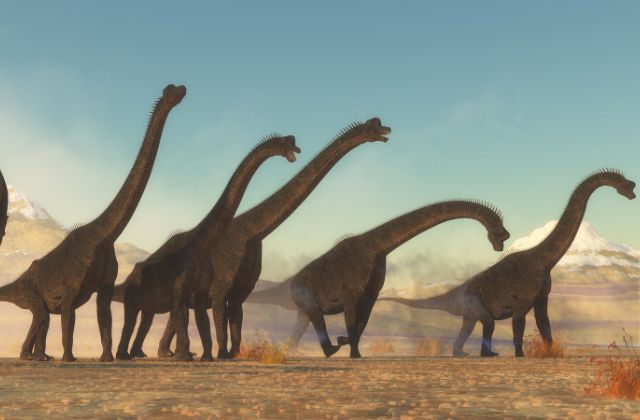
Brachiosaurus, according to scientists, could travel at speeds ranging from 12 to 19 miles per hour (19 to 31 kilometers per hour). It was safe from meat-eating dinosaurs due to its size and weight, as well as the strong claws on its feet. Brachiosaurus’ enormous height also helped it to keep an eye out for attackers approaching from afar.
10. It was simple to remove the Brachiosaurus skull from their neck.
The tiny-brained skulls of the Brachiosaurus were only weakly attached to the rest of their skeletons — and therefore easily detached (either by predators or natural erosion) after their deaths. It wasn’t until 1998 that paleontologists confirmed that a skull discovered by 19th-century paleontologist Othniel C. Marsh belonged to Brachiosaurus rather than the similarly shaped Apatosaurus. The loose-skull issue also affected titanosaurs, the poorly armored sauropods who inhabited all of the world’s continents throughout the Cretaceous period.
Conclusion
Weren’t Brachiosaurus some amazing creatures? We hope you liked the above interesting facts about Brachiosaurus for kids. For more such facts, visit our website.
